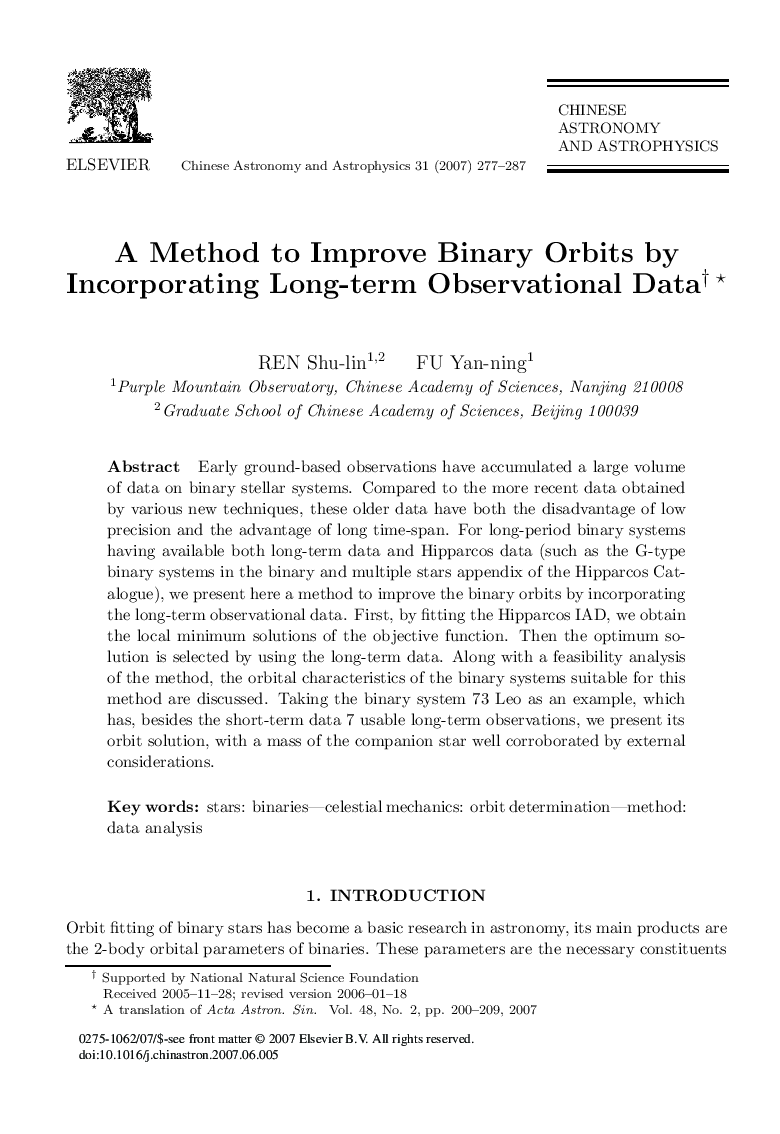| Article ID | Journal | Published Year | Pages | File Type |
|---|---|---|---|---|
| 1772205 | Chinese Astronomy and Astrophysics | 2007 | 11 Pages |
Early ground-based observations have accumulated a large volume of data on binary stellar systems. Compared to the more recent data obtained by various new techniques, these older data have both the disadvantage of low precision and the advantage of long time-span. For long-period binary systems having available both long-term data and Hipparcos data (such as the G-type binary systems in the binary and multiple stars appendix of the Hipparcos Catalogue), we present here a method to improve the binary orbits by incorporating the long-term observational data. First, by fitting the Hipparcos IAD, we obtain the local minimum solutions of the objective function. Then the optimum solution is selected by using the long-term data. Along with a feasibility analysis of the method, the orbital characteristics of the binary systems suitable for this method are discussed. Taking the binary system 73 Leo as an example, which has, besides the short-term data 7 usable long-term observations, we present its orbit solution, with a mass of the companion star well corroborated by external considerations.
